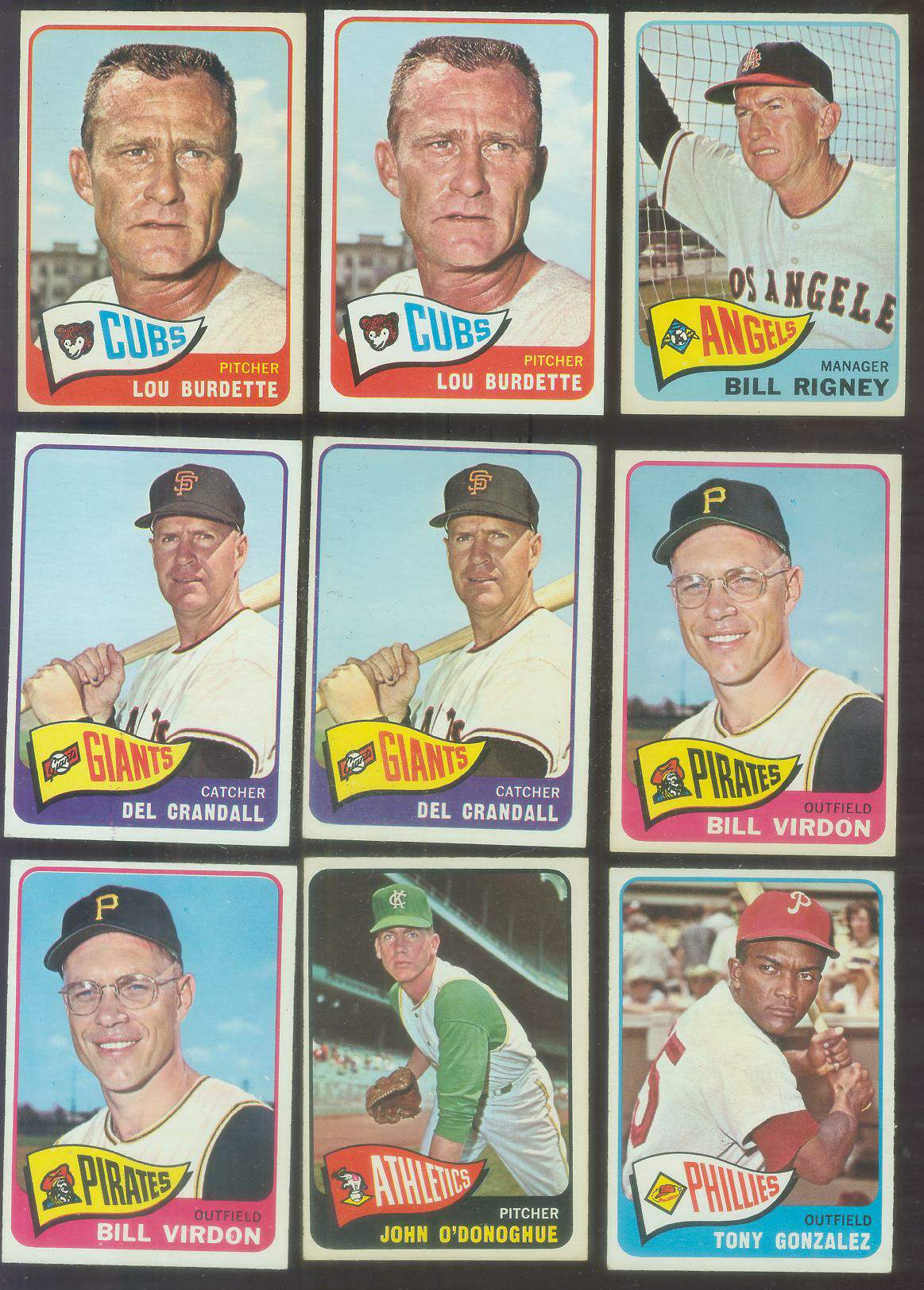Below are short bits & pieces on sportscard & baseball trading card collecting.
Please wander around the website for more info, prices, values & images
on vintage baseball, football, basketball, hockey, sport and non-sports cards.

1955 Topps Baseball Cards
Checklist & Values
1955 Topps was the first of 2 years of horizontal card designs.
As with 1952, 1953 & 1954, cards were again a tad larger than today's
standard. A nice feature, facsimile autographs, again appeared on the cards.
The set came in 2 series, #1-160 and scarcer "High Numbers" #161-210.
Due to the contract battles between Topps & Bowman, Cards #175,186,203 & 209
were never issued. Topps eventually won the war, buying Bowman making 1955
the last year for Bowman cards. But the damage was done as Topps had to
leave out many stars including Mickey Mantle & Stan Musial.
There were a total of (15) Hall of Famers in the 1955 set !!!
Top ROOKIEs: Roberto Clemente, Sandy Koufax & Harmon Killebrew
Top Stars: Hank Aaron, Ted Williams, Al Kaline, Ernie Banks, Warren Spahn,
Jackie Robinson, Eddie Mathews, Willie Mays, Yogi Berra & Duke Snider.
"The Golden Greek" Harry Agganis, a popular 1955 Topps card, is a tragic
story, Agganis, a rising young star, died after his first card was issued.
A football star at Boston U., he turned down an offer from the Cleveland
Browns and became the starting first baseman. Shortly after he came down
with pneumonia and died of a Pulmonary Embolism.
Note: You may be on that page right now.
|

Team Autographed / Signed Baseballs
Team signed baseballs were the thing well before single-signed
balls exploded on the market.
What is a "Team Signed Baseball" ???
Simple answer: A ball with XXX signatures of a certain team
for a certain year. What is difficult is the XXX.
Baseball tons of roster moves make it nearly impossible to
"Get Them All".
Generally, team signed baseballs from early 1900's had 10 to 15
signatures, the 1940's that jumped to 18 to 25.
Joyce Sports Research Collection (Notre Dame) says "signatures must
include only members of a specific team from a specific year, and there
must be some approximation of completeness."
Not concrete but to me a "team ball" MUST have ALL the team's
STARS (unless a rookie or in season trade) and in today's market
at least 20, preferably more, and the manager.
Determining Age of Team Signed Balls
"Official" league balls have stamped signatures of current league
presidents on the "sweet spot".
Starting 1934/1935 balls were produced by Spalding (NL)
and Reach (AL). Rawlings took over in 1977/78.
Have a possible team roster at hand, ESPN & baseball-reference.com
have great sites), decipher a few signatures then solve the puzzle.
Team Signed Baseballs Values
Pricing team signed baseballs is difficult due to subjectivity and
factors involved suce as: Signatures placement, quality, strength,
number of autographs, stars, age, team significance, and
eye appeal considering fading, whiteness,
scuffs, shellacking, staining, overall wear...
Team autographed baseballs on official league balls get higher values.
They are "official", made better, preserve better and even help in
dating especially with balls signed at "Reunion" baseball card shows
which brought together great teams of the past.
Facsimile Autographed Balls
1960's/1970's machine-printed "autographed" team baseballs were sold
at stadium gift shops for around $1.95. Easy to identify as
all signatures were uniform in ink, color, size and look.
"Facsimile" signatures are also often found on baseball cards.
Note: You may be on that page now.
|

Autographed Gateway Cachets

Gateway Stamp Company has provided collectors over 1 MILLION
authenticated certified autographs over the last 30+ years.
Though a "stamp company", Gateway went down a new creative road
combining art, color photographs, historical events & autographs
with their full-color silk cachet envelopes.
WHAT IS A SILK CACHET ?
A "cachet" is a design on an envelope marking an event.
"Silk" refers to the delicate material the art and photography are
printed on after which it's signed by the player and then post-marked by
the Post Office IN THE EVENT'S CITY !!!
WHY POSTMARKS?
A postmark is a great way to mark historical events and the rules
governing postmarks GUARANTEES that NO Gateway issue can EVER be
re-issued protecting their value !!!
Note: You may be on that page right now.
|

Baseball card collecting terms (part G)
Grade/Condition Centering, corner wear, photo clarity, edges,
creases, print flaws ... all combine to determine a card's condition or grade.
Along with rarity/scarcity it is the major factor in a card's value.
Graded Card As values increased the condition of cards and the
determination of fakes and alterations became increasingly more important.
Various companies became "graders" of your cards. For a fee they would grade
your card (usually on a 1 to 10 scale) and then placed in a sealed plastic
holder with labelling of the vital information.
From past experiences, most people are NOT HAPPY with the grades they receive.
To keep values up, graders can be extremely picky. Things you don't see,
they do so don't be surprized when the NEAR MINT card you send in ends up
with an EX or EX/MINT grade.
There are TOO many grading companies - if you do, do choose carefully.
PSA / SGC / GAI / BGS are some of the many companies.
It is good to know that getting a card graded by a company that people
do not recognize or respect will usually just cost you time and money
and not help you in any way.
© 1995-2019 "InterNet's Baseball Card Store" / Joseph Juhasz ... All Rights Reserved
|








